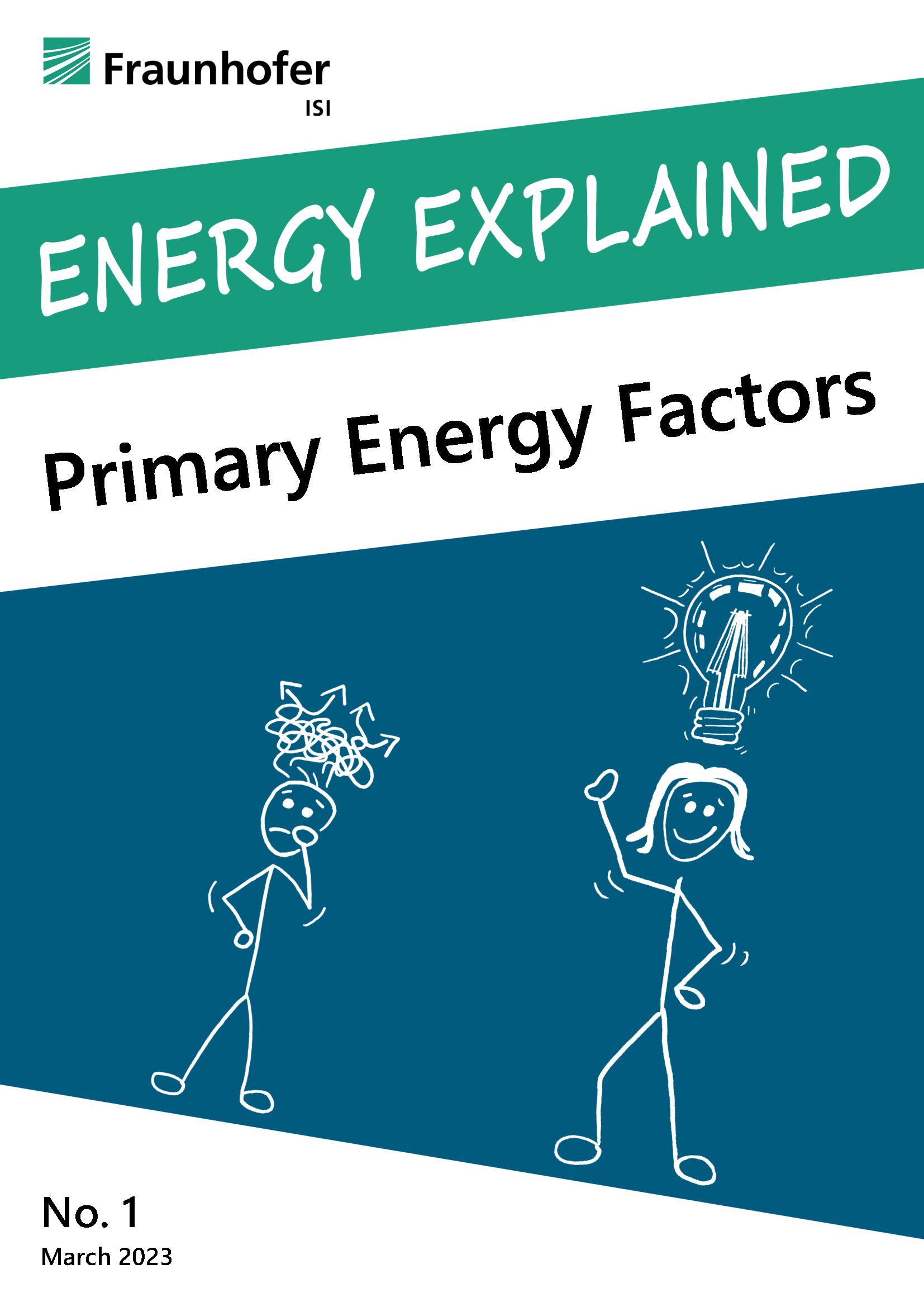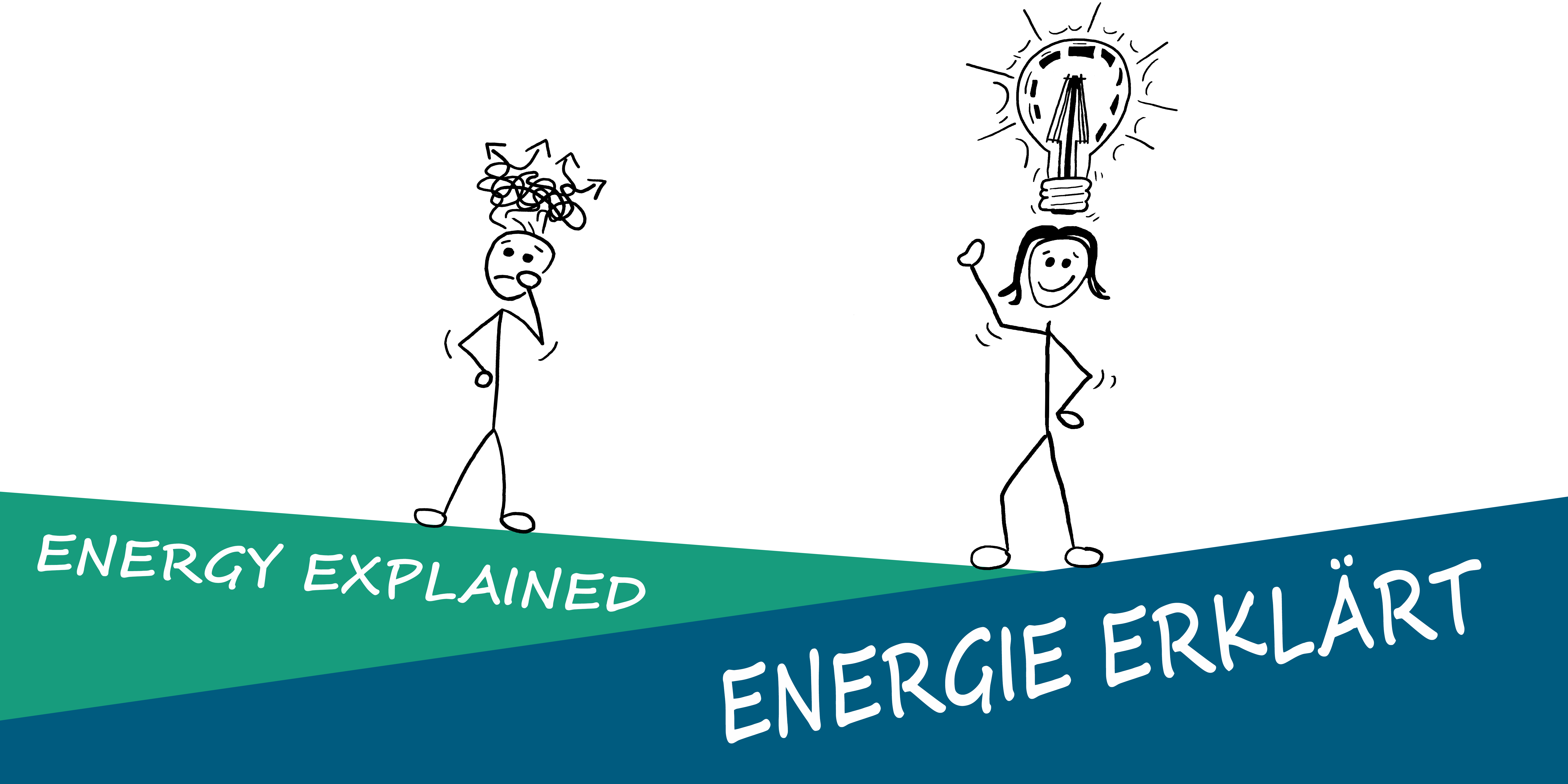Daily work in energy research shows that topics and terms are sometimes not clear or easy to understand. In the ENERGY EXPLAINED series published by the Fraunhofer Institute for Systems and Innovation Research ISI, scientists explore complex issues from the practice of energy research and offer a vivid and concise introduction to the respective topics.
ENERGY EXPLAINED
Nr. 1 Primary energy factors
Primary energy factors
Primary energy is energy that is available as an energy source in its natural form. However, before it can be used, primary energy is usually converted into final energy in one or more steps. The primary energy factor plays a crucial role in this context:
- Formally, a primary energy factor describes the ratio between primary energy use and final energy supply and thus the efficiency of the final energy supply.
- Against the background of the limited availability of fossil resources, primary energy has been and still is an important indicator for assessing the efficiency of an energy system.
- In particular, primary energy factors have been used in energy policy making to illustrate the limited availability of fossil resources.
- With the deployment of renewable energies and the need to define their primary energy factors, primary energy factors are becoming less important than other metrics, such as the shares of renewable energies in final energy supply or in final energy consumption as well as the greenhouse gas emissions.
- Primary energy is very context-dependent.
- For many energy carriers, there is no single, correct primary energy factor, but only one that is more or less appropriate for the objective in question.
- Clarity of objectives and transparency of system boundaries and conventions are essential for a meaningful interpretation of primary energy factors.
Download:
Primary energy factors (EN) or

Nr. 2 Savings calculations for funding instruments
Calculating savings for funding schemes
The calculation of savings plays a key role in assessing the extent to which energy and climate targets are being achieved. Among other things, these calculations are needed to monitor and control political support schemes, i.e., to assess their impact and to avoid "flying blind".
- Savings can relate to the use of goods or services and/or the release of pollutants into the environment (e.g., carbon dioxide emissions).
- The calculated savings depend on a large number of assumptions.
- A very important assumption regarding the system boundary is the choice of calculation method: Depending on whether an energy-saving measure is considered over a short period of time, a long period or over its entire lifetime, the savings can be substantially different. Each of these different calculation methods have their place, but their appropriateness depends on the objective and perspective.
- In addition to the calculation method, the established reference basis (e.g., the legal minimum standard), the time of analysis (e.g., estimation for planning as opposed to monitoring after implementation), and the assumptions about service life and the duration of impact play an important role.
- In addition, adjustments for distorting influences are necessary. If a publicly funded measure, for example, was implemented without the funding, it could only be taken into account proportionately. In most cases, both unadjusted gross savings and adjusted net savings are reported.
- For the calculations data from different sources (grant applications, surveys, statistics, etc.) can be used which may vary in quality.
- In the context of energy policy, energy savings in particular are often used to determine additional values, especially emission reductions and energy cost savings.
- Overall, caution should be exercised when comparing savings. It helps to have a transparent calculation methodology and an awareness of the possible assumptions which have been made.
Download:

